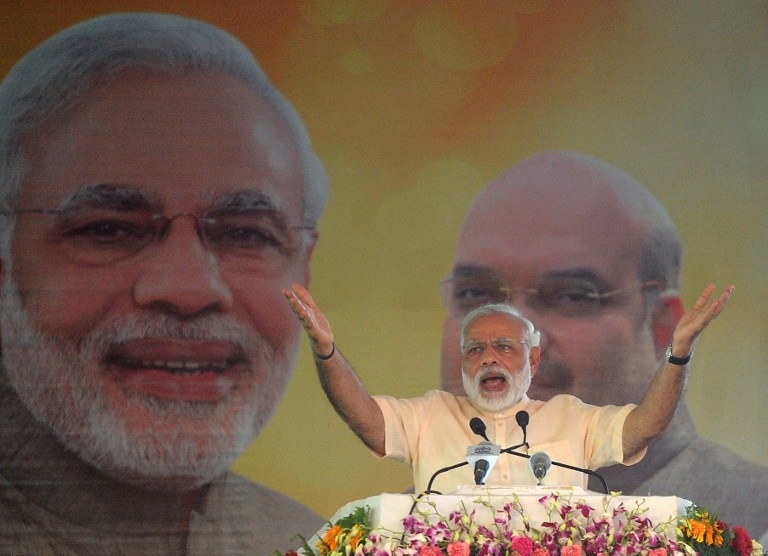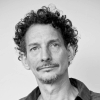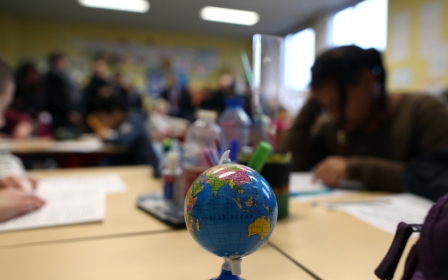Muslims under Modi: The dark side to India's prime minster

A special court in the city of Ahmedabad, the capital of western India’s Gujarat state, in June condemned 11 people to life for their role in deadly inter-religious riots in 2002.
This and the fact that 13 others were also given to up to 10 years in jail may seem good news for survivors of the carnage in Gujarat. However, many do not feel justice has been done.
Not a single politician or civil servant was put behind bars, and there was not even an admonishment for the prominent figure many Muslims hold responsible for the bloodletting - Indian Prime Minister Narendra Modi.
Today, the 56-year-old leader of India likes to present himself as a moderate whose pro-business agenda is a blessing to all Indians.
His looks help, with his neatly trimmed beard and perfect smile, he seems everyone’s favourite uncle. However, below the cuddly surface lurks a dark past.
A long-serving member of the Hindu nationalist Bharatiya Janata Party (BJP), Modi was chief minister of Gujarat at the time of riots which produced the worst sectarian violence since the 1947 partition that created the Hindu-dominated state of India and its Muslim counterpart Pakistan.
The riots started on 28 February 2002, one day after a train fire, allegedly started by Muslims, left 58 Hindu pilgrims dead. Hindus went on a three-day rampage across the state. An estimated 2,000 Muslims were butchered and burnt to death, while tens of thousands of others lost their homes and livelihood. Rape, mutilation and torture were rampant.
Modi has always maintained that he did everything in his power to contain what he calls an outbreak of spontaneous violence. However, numerous reports and witness accounts sketch a far more sinister picture: that the violence was orchestrated by a core of Hindu nationalist outfits, and the state authorities dominated by Modi’s BJP played a supporting role before, during and after the massacre.
For example, immediately after the train burning, Modi did nothing to curb the rising tensions. Instead, he threw oil on the fire by declaring the incident a “premeditated terrorist attack,” although there was no evidence for the claim. He had the 58 burnt corpses put on public display in Ahmedabad.
That same evening, he held a meeting at his residence with a number of BJP ministers, police officers, Hindu activists and politicians. A police inspector and the late Gujarati home minister, Haren Pandya, have since gone on record as saying that Modi told Gujarati police not to stand in the way of the upcoming “Hindu backlash”.
Pandya was killed by unknown assailants in 2003. Several civil servants, anonymously, testified that during the riots two of Modi’s ministers were present at the Ahmedabad police headquarters, while a third was found at the state headquarters.
The fact is that the Gujarat police, with very few exceptions, did not interfere during three days of violence. A Human Rights Watch (HRW) report on the case has the telling title “We have no order to save you,” which was a commonly heard reply whenever people called the police.
As the police stood by, Hindu activists were trucked in. Dressed in their typical khaki uniforms, they were armed with swords, trishuls (tridents), petrol and gas bottles, and carried election lists indicating the homes and properties of Hindus and Muslims respectively.
Following the three-day ordeal, authorities did everything to conceal the truth. Witnesses were intimidated, evidence disappeared. Investigators, prosecutors and judges working on the case often had links to the authorities. Plaintiffs tried to have their case heard outside the state of Gujarat, but nothing was done.
If not for the superb journalism and hidden camera reporting of Tehelka Magazine, much of the tragedy and facts of how it unfolded would remain hidden even today. The details of the killings and the intense hatred in the interviews with some of the perpetrators are hard to read and even harder to grasp.
According to French political scientist Christophe Jaffrelot, who has written extensively on the rise of Hindu nationalism: “The violence in Gujarat, due to its very geographic scope and unbearable intensity, in fact marks the first example of ethnic cleansing targeting Muslims since India's Partition in 1947: the aim here was not only to loot and destroy private property, even if such events also took place, but indeed to murder and run off those perceived as intruders.”
The term “intruders” is crucial in understanding the shocking cruelty that was on display during the riots and leads us straight to the heart of “Hindutva:” the right-wing ideology that ideally aims to bring an end to the secular state of India by establishing Hindu hegemony.
In short, based on the 19th century ideal of one nation, one people and one culture, Hindu nationalists perceive India first and foremost as Hindustan, the natural homeland of the Hindus, the country’s original inhabitants. While Hindus have lived in the subcontinent since times immemorial, India’s Muslims are descendants of foreign invaders or, at best, Hindus that once converted to Islam.
“Research on communal riots in India after 1947 suggests that these riots largely originate from a distorted idea – ideology – of the Other,” Jaffrelot wrote. “And the Hindu nationalist parties, which have codified this ideological pattern, employ it for electoral means.”
Before the riots, the ruling BJP had lost a lot of popular support due to criticism over its response to an earthquake in January 2001, which killed up to 20,000 people and destroyed over 300,000 homes. It was to curtail the crisis that the party’s national leadership had sent Modi to take over the post of chief minister from the ailing Keshubhai Patel in October 2001.
Having dealt with the train fire and riots, Modi successfully ran an election campaign steeped in anti-Muslim rhetoric. In December 2002, the BJP won the Gujurat elections with over two thirds of the vote. The party has been in power ever since. Modi remained chief minister until 26 May 2014, when he was sworn in as India’s 14th prime minister, heading a BJP government backed by an absolute majority in parliament.
Despite eager efforts to present himself as a moderate statesman, it is hard to forget Modi's true colours and dubious past. The son of a simple tea seller, Modi has been a member of the powerful Raṣṭrīya Svayamsevaka Sangha (RSS) ever since he was a child.
The RSS is an umbrella organisation of dozens of Hindu nationalist outfits, including the BJP. It has its own paramilitary wing and runs a network of schools across the country. RSS members regularly meet for a mix of martial arts training and history lessons celebrating India’s glorious Hindu past.
When they do, they wear the same khaki outfits so prominently on display during the 2002 Gujarat riots.
While Modi will arguably never be prosecuted, he will forever be linked to one of India’s darkest hours since independence.
- Peter Speetjens is a Dutch journalist based in Sao Paolo, Brazil. He lived more than 20 years in Beirut, where he was a correspondent for Trouw and de Standaard. He has a special interest in how 19th century writers/travellers helped shape Western conceptions of the Middle East. You can follow him on Twitter: @PeterFromBeirut
The views expressed in this article belong to the author and do not necessarily reflect the editorial policy of Middle East Eye.
Photo: Indian Prime Minister Narendra Modi gestures as he addresses a rally after a two-day Bharatiya Janata Party (BJP) national executive meeting in Allahabad on 13 June, 2016 (AFP).
This article is available in French on Middle East Eye French edition.
Middle East Eye propose une couverture et une analyse indépendantes et incomparables du Moyen-Orient, de l’Afrique du Nord et d’autres régions du monde. Pour en savoir plus sur la reprise de ce contenu et les frais qui s’appliquent, veuillez remplir ce formulaire [en anglais]. Pour en savoir plus sur MEE, cliquez ici [en anglais].





